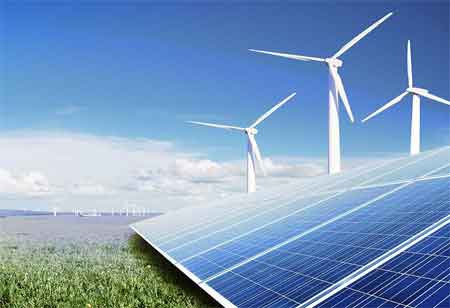Thank you for Subscribing to Agri Business Review Weekly Brief
Eyes in the Sky, Agro Drones Gearing Precision Agricultural Practices!

By
Agri Business Review | Tuesday, January 18, 2022
Stay ahead of the industry with exclusive feature stories on the top companies, expert insights and the latest news delivered straight to your inbox. Subscribe today.
Farmers are sitting back and researching optimizing crop yield while the drones do the heavy lifting. Sounds interesting.
FREMONT, CA: Agriculture is a centerpiece of a country's economy, being the primary source of livelihood for a large section of the population. But, from production challenges to financial inefficiencies agricultural sector is plagued by several issues. Be it lack of quality tools or erratic monsoons. Farmers are the sole risk bearers of all the challenges in the farming cycle. Farmers have to face it all without any risk mitigation among other stakeholders. Today is an age where technology is at heart, shaping farming practices. Among all technological innovations, drone technology is a phenomenal innovation that has far-reaching effects across the agricultural industry, transforming how people are farming.
The industry seems to have embraced drone technology with open arms. Drones programmed intelligently can save a farmer repetitive and cumbersome tasks and use it to individually monitor crops, ensure the efficiency of inputs such as water and fertilizer and optimize growth, called precision agriculture. While precision agriculture is the brain of a farmer, a drone can be the body of a farmer. They are used to observe crops, their texture, growth, condition of pests, and many more. The observed data is processed using programs based on precision agriculture, and based on the analysis, the drones carry out tasks or respond to the crops to optimize growth. The exclusive aerial features of drones make the application of precision agriculture effective. Examining how precision agriculture works with drones can reveal the facts given below.
• Surveying and Filed Analysis
Surveying or mapping is the drone's operation of observation. With drone technology, farmers draw around the areas they need to cover as the devices are equipped with flight planning software, enabling them to follow an automated flight path. The track can also be decided autonomously by the drone. The drones can then take pictures using their sensors and the built-in camera with the help of GPS to determine when to take each shot. Surveying leverages techniques such as image tracking image acquisition to make it more innovative and more like a farmer to identify diseases in crops better and identify the optimal responses. The information gathered can also help farmers identify the most effective patterns for planting crop management or identify dead soil zones. The ongoing analysis also helps in better-utilizing water resources and managing crop nutrient levels.
• Seed Planting
Drone planting is a relatively newer technology, but agriculture technology companies are experimenting with it. Manufacturers are trying to innovate custom systems that can shoot seedpods into prepared soil. This unique technology helps to minimize the need for costly on-the-ground planting, which is labor-intensive, time-consuming, and a strenuous task. In addition, the same technology is being adapted and applied to various farm types, reducing overall planting tome and labor costs.
• Crop Dusting and Irrigation Monitoring
Crop dusting is a daunting task for a farmer, which drones can take over to save time, resources, and health. It can carry tanks of fertilizers and pesticides to spray crops with more precision. This helps reduce costs and potential pesticide exposure to farmers who spray those crops manually. Surveying and crop dusting combined can make drones intelligent and active since they can analyze plants with precision and respond accordingly. Managing multiple irrigation points is inconvenient and demanding for farmers. Once crops grow at certain heights, mid-season inspections of the sprinklers and nozzles on irrigation equipment that deliver water are simplified and carried out effectively with the drone.
• Weed Identification and Health Assessment
A weed can be identified by drones using the data gathered from their sensors so that farmers can easily differentiate areas of high-intensity weed proliferation from the crops growing alongside them. This can help improve the quality of plants. Drones can also identify bacteria, fungus, or crop disease based on Infrared radiation transmitted from sensors, thermal imagery, and image acquisition. This provision can help prevent infections from spreading to other plants, and with multispectral images, drones can identify conditions before they are detected with naked eyes. As soon as a sickness is discovered, farmers can remediate it more precisely, which increases a crop's ability to overcome diseases. The possibilities of drone technology help farmers document losses more efficiently for insurance claims in case of crop failures.
Agricultural drones indeed help farmers to achieve and improve precision agriculture. This approach to farming management—based on measuring and acting on real-time crop data—erases the need for guesswork in modern farming and instead gives farmers the ability to maximize their yields while enhancing crop production. The industry is looking for more sophisticated sensors and cameras and developing drones that require minimal training and are highly automated. In recent years the cost of agricultural drones has rapidly decreased, leading to the explosion of drone use cases in farming. The market is expected to grow in the coming years and is driven by increasing population levels, and technology is sure to stand as the pillar for modern farmers.





